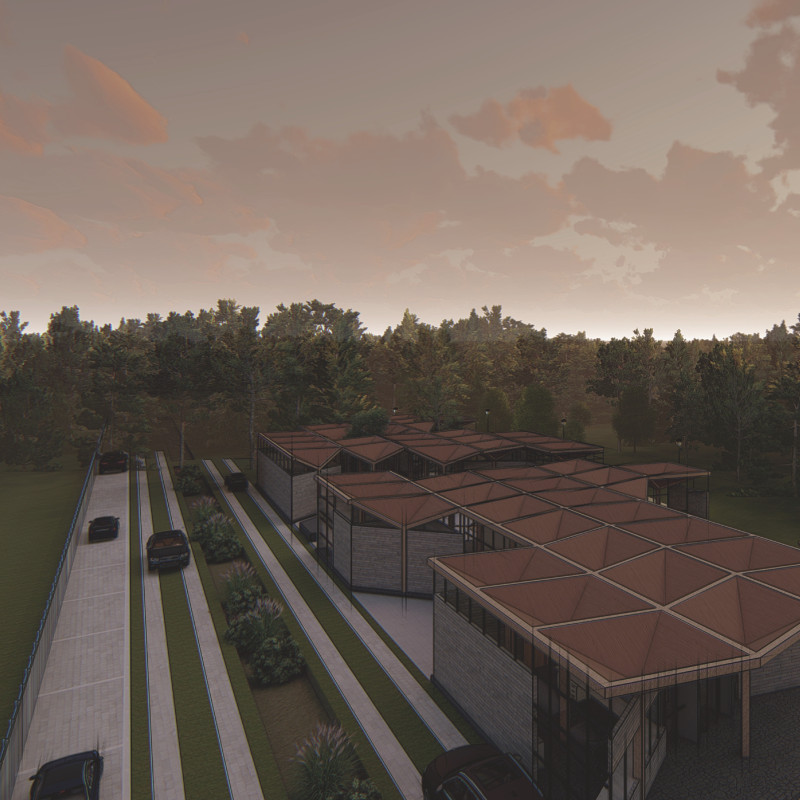5 key facts about this project
Pape Nature Park Gateway is located in the natural landscape of Pape Nature Park, serving as an entry point for visitors. The design takes inspiration from the forms of trees and the movements of the Earth’s crust. It creates a strong connection between the structure and the surrounding forested area, welcoming guests into the park.
Design Inspiration
The form of the building is shaped by the geometric qualities found in nature. The design reflects the simple structures of trees, conveying a sense of familiarity. This connection to the environment helps the building blend into its surroundings, making it part of the landscape rather than separate from it. The organization of the space draws upon natural patterns, adding to the overall coherence of the structure.
Ecological Features
Sustainability is an important aspect of the design. A rainwater harvesting system collects water, using pipes built into the columns to direct it to underground tanks. This feature not only reduces water usage but also makes the most of the natural resources available on site. The building incorporates methods that align with environmental best practices, highlighting a commitment to ecological responsibility.
Spatial Organization
The layout addresses the needs of visitors, ensuring safety and accessibility throughout the site. Pedestrian paths are clearly separated from vehicle routes, minimizing conflicts and enhancing the experience. A designated area allows visitors to easily load and unload at campsites, while winding paths connect the structure to the natural surroundings. This careful planning supports a smooth flow for those exploring the park.
Design Details
Large windows are a key feature of the building, designed to bring in natural light and create a bright atmosphere. The placement of these windows helps connect the interior spaces with the outdoors, allowing visitors to appreciate the changing scenery even while inside. This focus on natural light adds to the welcoming nature of the building and reinforces its relationship with the park’s landscape.



























